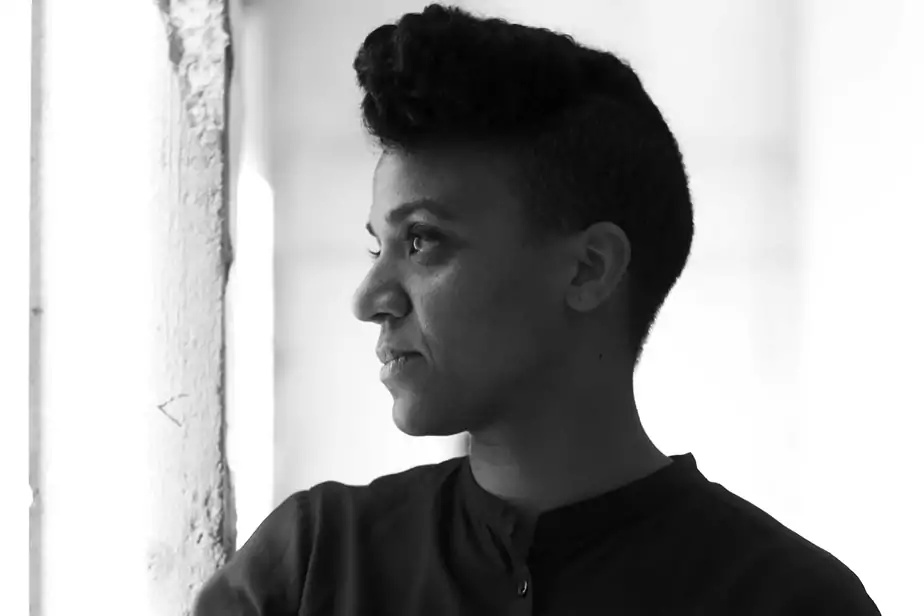Hundreds of thousands of tiny glass beads will soon sparkle in the sun all over the Canadian pavilion at the Venice Biennale.
The work’s creator, Kapwani Kiwanga, born in Hamilton and now based in Paris, wants you to look beyond the cobalt blue glass that glows in the Venetian light and see each bead as a character.
“The materials are documents in themselves,” she says. They are witnesses. »
The beads used in her installation, titled Trinkets, were made on the neighboring Venetian island of Murano. Centuries ago, similar beads were used around the world both as sought-after trade goods and as currency. Their name, “conterie,” comes from the Portuguese word meaning “count.”
“I never use materials simply because they are aesthetic,” emphasizes M.me Kiwanga. It’s really their social, cultural and economic history that makes me want to focus on a material. »
Her installation at the Canada Pavilion was unveiled Tuesday, more than a year after she was named Canada’s representative to the 60e Venice Biennale.
Mme Kiwanga has previously presented work at art galleries and fairs from Saskatoon to Dublin and from London to Istanbul.
She has won major art awards in Canada and France and has been recognized by the British Academy of Cinema and Television Arts (BAFTA) for her film work.
In his work, his interest is in what the materials have to say about themselves. Sometimes it’s the plants that speak. One of its previous installations, Flowers for Africauses familiar flowers like gladioli native to Africa.
His works may appear to be designed for a chic wedding or the lobby of an upscale hotel, but they are recreations of floral arrangements created for diplomatic events linked to African countries’ independence negotiations. The arrangements gradually faded, evoking emotions about the passage of time and the fleeting nature of things.
In other works, colors speak to the audience. Linear Paintings explores shades supposed to favor certain atmospheres and used by industrial designers to cover the walls of offices, psychiatric hospitals and prisons.
“I consider them as characters who witnessed a past event,” she explains. History is the starting point for much of my work, although I think about our present and sometimes also our future. My broader interest is in power and power dynamics. »
An honor to represent Canada
She wants people to view her work as a sort of “bridge.”
“I’m not trying to prove anything. I’m not trying to prove a point. I just say who, how or what,” she says.
The work begins with a vague notion of something interesting that sheds some light on how the world works.
Then it’s time to study. Popular and academic works on the theme are consulted, experts are interviewed and archives are combed through. She points out that about 60% of the work needed to create a new work is done in the library and not in the studio.
Mme Kiwanga credits his degree in anthropology from McGill University with the research skills necessary for his artistic practice.
For her sense of the world, she gives some credit to Hamilton. She now divides her time between Canada, France and Tanzania, but it was Steeltown that first showed her that the world is big.
“I grew up in downtown Hamilton in a diverse environment. I remember in my freshman class we had people from all over the world, some of whom had just arrived. The world was already in this tiny piece of my reality. »
Being chosen to represent Canada at the nearly 130-year-old Venice Biennale “was a great honor,” she said.
Canada has been represented there since 1952. This year, 63 countries will participate.
Past Canadian representatives have included such illustrious artists as Alex Colville, Michael Snow and Stan Douglas, which creates some pressure, admits Mme Kiwanga.
“One person is chosen every two years, but there are so many other artists who could have been chosen and achieved something extraordinary. I felt responsible. »
But the simple fact of participating in a global artistic event will be a highlight, according to her.
The Venice Biennale will take place from April 20 to November 24.
